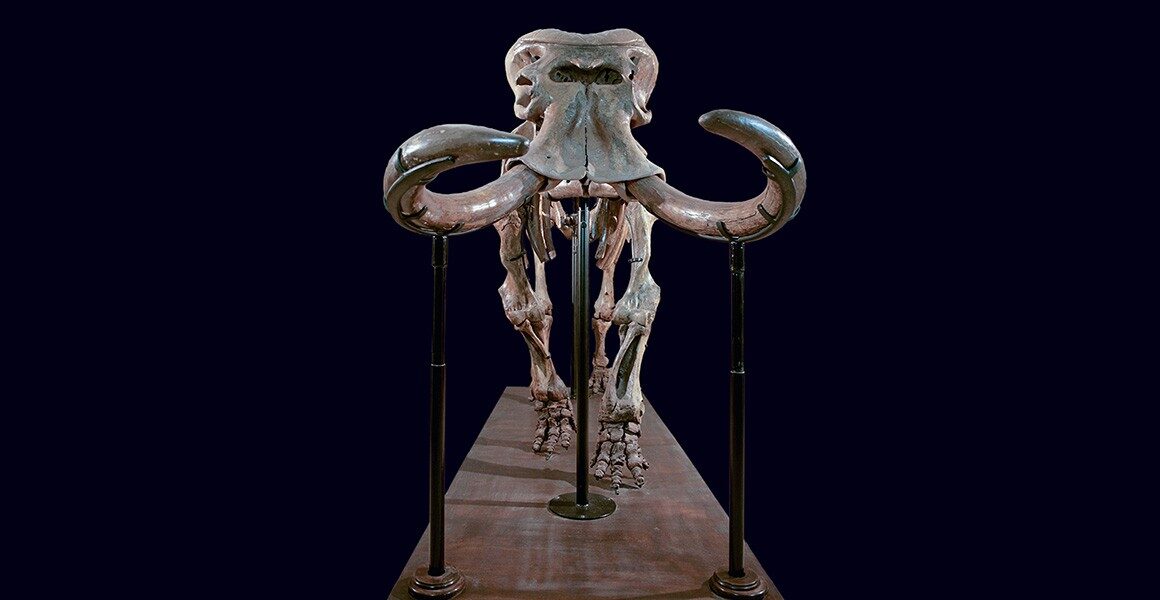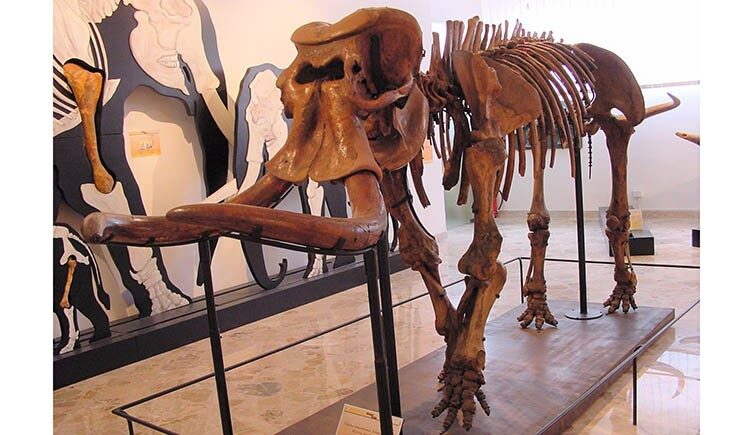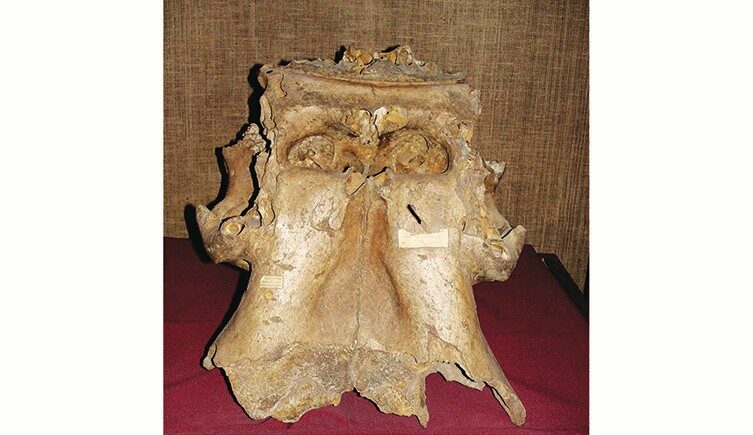
Now for the first-time researchers have been able to extract and delve into the DNA of one of these extinct elephants, helping to show how the largest land mammal ever to exist shrank by at least 8,000kg to become one of the smallest elephants known.
The tiny elephants that were once found on Sicily were some of the smallest elephants ever to have existed, but quite extraordinarily they are descended from one of the biggest land mammals ever to have lived: the straight-tusked elephant.
These animals were genuine giants, with some individuals reaching up to 4.5 metres tall and tipping the scales at 14 tons. An adult straight-tusked elephant could very easily have rested its chin on the back of a bull African savannah elephant.
But new research is revealing that it took a surprisingly short period of time for this miniaturisation to occur, perhaps just 40 generations for the huge ancestors to shrink to the tiny islanders.
The change in size over this time would have been the equivalent of an adult human shrinking to the size of a rhesus macaque monkey.
Dr Victoria Herridge is a researcher at the Museum whose focus is on the tiny elephants once found on a number of the islands in the Mediterranean, and was involved in the paper published in Current Biology.
'We have sequenced the mitochondrial genome from one of the skulls of an elephant from Puntali cave in Sicily,' explains Victoria. 'This is amazing, because up to now there has been no DNA evidence at all from any of the southern European population of straight-tusked elephants. We've only had ancient DNA from German specimens.'
This is largely due to the environments in which the fossils were preserved, with the heat and humidity making it exceedingly difficult for any DNA to survive. The team were able to extract and sequence DNA from the petrous bone, a small and very dense bone found in the base of the skull, and one that is renowned for preserving ancient DNA.
The results have shown that the straight-tusked elephant lineage that led to the tiny elephants on Sicily actually split away from the German elephants around 400,000 years ago, even though these miniature elephants are only thought to have been isolated on Sicily within the last 200,000 years.
This is intriguing because it suggests that in the gap between these dates, there was something interesting going on with the populations of these giant herbivores within continental Europe, perhaps a divide between those living in the north and those in the south.

The island of Sicily sits in the Mediterranean Sea just off the toe of Italy. While today the wildlife that lives on the island is much like that of the mainland, in the past it used to be home to a range of miniature animals.
This included at various points in its past two different miniature elephants.
One of these was truly tiny, reaching just a metre in height and likely weighing around 300kg, they were about the same size as a Shetland pony. After this tiny species went extinct, a second miniature elephant evolved, albeit slightly bigger than this.
Fossils found in Puntali cave on Sicily reveal that this elephant stood around two metres tall and weighed around 1,000kg.
'They are not as small as the really tiny ones, but nevertheless smaller than the massive four metre tall, 10 ton straight-tusked elephant,' explains Victoria.
It is thought that both these miniature elephants evolved when the giant straight-tusked relatives reached Sicily when sea levels were up to 100 metres lower than they are today, and then became trapped there after sea levels rose again. But how and when these giants colonised the island is still not fully understood.
One big part of the problem is dating the Puntali Cave fossils themselves.
Dr Carolina Di Patti, a curator at the Geological Gemmellaro Museum of the SIMUA at the University of Palermo, was also involved in the study.
'150 years after its discovery, the collection of the Grotta dei Puntali still holds surprises for us,' says Carolina. 'The site was excavated between 1868 and 1870, and produced a large collection of elephant remains, including complete skulls and isolated postcranials, most of which are now stored in the Museo di Paleontologia of the University of Palermo.
'The fossil remains from the Puntali Cave represent the largest and best-preserved sample of these elephants.'
It is known from excavation records that dwarf elephants were found in at least two different stratigraphical layers, but it is unclear which layer the skull came from which yielded the ancient DNA sequence.
'We had to take the approach of considering all the possible geological and palaeontological scenarios for how old the fossil was, which left us with quite a large range of options,' says Victoria.

By sequencing the mitochondrial genome from the Puntali fossils, and combining it with this geological and palaeontological evidence, researchers have started to piece together the story of these elephants.
It shows that the Puntali elephants were isolated on Sicily at least 175,500 years ago, but potentially as recently as 50,000 years ago.
This then allowed the team to estimate that the elephants shrank in size by up to 200kg per generation, shedding 8,000kg to reach just 15% the size of the straight-tusked elephant within 40 generations.
'We have produced a range of realistic evolutionary scenarios,' explains Victoria. 'I would not be surprised if evolutionary rates were even higher than our highest estimate, but only new data on Sicilian and other southern European material will refine this further.'
The fact that the team have managed to extract some from the fossils on Sicily means that it will hopefully open things up for the same to be done with fossils from Italy, the rest of Southern Europe and potentially those from Africa.
'I am incredibly excited about what this might hold for our understanding of island evolution, and the future of elephant research more broadly,' says Victoria. 'We know that there is a much more complex story to be told about the evolutionary history of the highly-endangered African forest elephants, which involves potential interbreeding with straight-tusked elephants.
'Getting ancient DNA from fossil elephants inhabiting the Mediterranean fringes offers hope we might crack this puzzle too.'



Comment: It's unlikely that the standard theory of 'evolution' can explain what happened to Sicily's elephants:
- Last mammoths plagued by genetic defects
- Evolution - A Modern Fairy Tale
- Why Darwinism Is Wrong, Dead Wrong - Part 1: Intelligent Design and Information
- Despite lack of genetic diversity narwhals still thrive
- Bird that went extinct 136,000 years ago comes 'back from the dead' after evolving again
Also check out SOTT radio's: